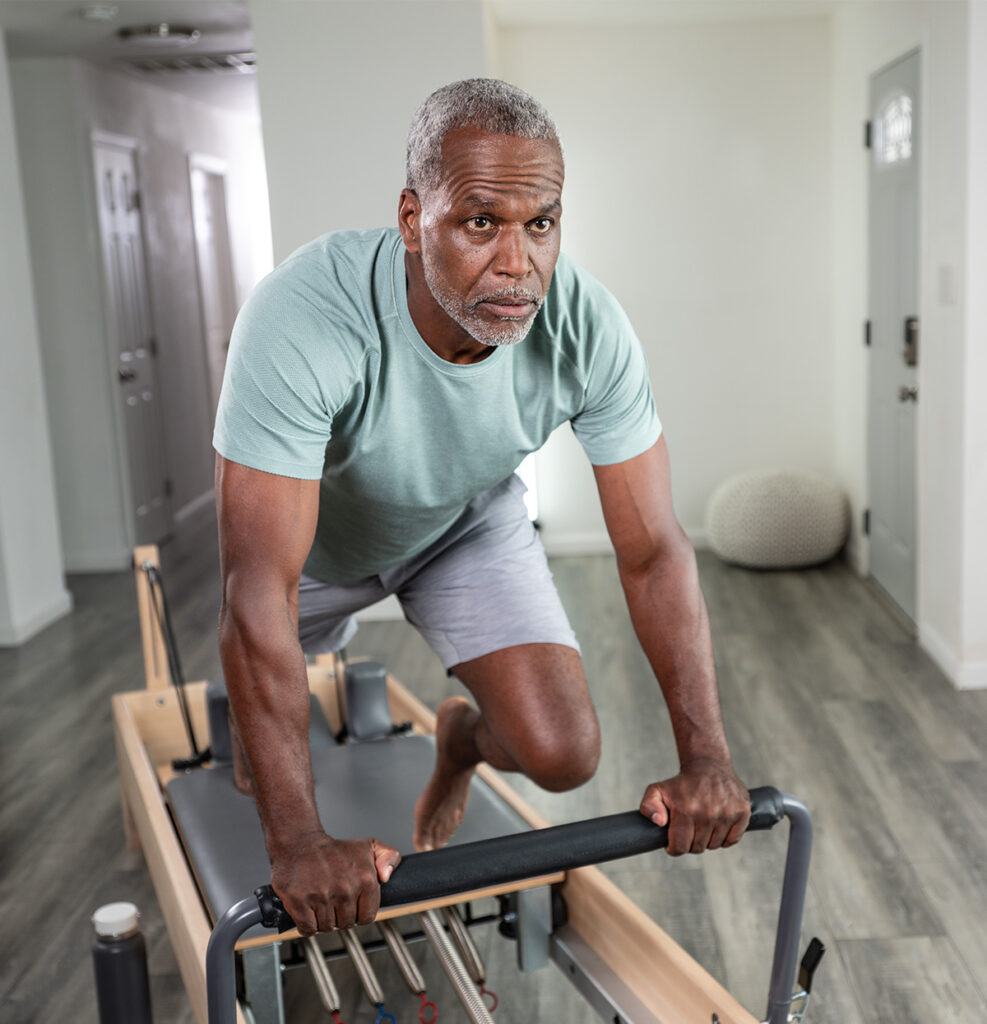When Staying the Same is Good Enough
By Gwen Miller
Years ago, I was teaching a lovely couple in their late seventies. At one point, attempting to be cheerful, when changing sides for an exercise I told them to “hop off the long box or just spin around to the other side.” The gent snorted and said something to the effect of “honey, we don’t spin or hop anymore.” I replied, “Well then we can carefully get down and walk around to the other side.”

Something in his demeanor seemed a little down that day. So, like the bulldog I am (I never let go) I said, “you know, studies have shown that people can get stronger, build bone and muscle mass, and improve balance well into their nineties.”
He thought about that, and replied, “you know, at our age, sometimes staying the same is good enough.”
I thought about that for a long time.
Did you know that, if someone does NOTHING as they age, they will lose an average of 2-3% of their muscle mass each year? This is called sarcopenia. A colleague I admire put it in another way; she said, “between the ages of 40 and 80, if people do not work on it, they can lose as much as FIFTY PERCENT of their muscle mass.”
That scared me. I immediately flashed on elderly people I have known, who ended up in a wheelchair with thighs as big around as my forearms, unable to stand or walk on their own.
This was the result of doing nothing about it, and the tipping point happened and they were no longer self-sufficient, self-reliant, self-determinant, self-confident. They were dependent on others for their basic functions.
Thinking about this further, if the average muscle loss is 2-3% each year, that means that NOT losing muscle, or STAYING THE SAME, actually takes work, and sometimes, maybe, it IS good enough. It is certainly the first step, staying ahead of the curve, avoiding the downward spiral.
Sadly, sometimes people experience pain or discomfort or an injury, or receive a diagnosis about their back or hip that they don’t truly understand, and it creates a fear of movement, which evolves into a downward spiral.
So many people could be helped with exercise and movement, but they don’t know what to do. So they are scared of doing anything at all.
This is why I wrote my book: Safe Movement for All Spines – A Guide to Spinal Anatomy and How to Work with 21 Spine and Hip Conditions. It is a resource book for teachers, and a guide for everyone. My mission is to educate and empower people and the teachers they work with.
I want everyone to feel confident and empowered to move, because we know that movement heals!
I still work with that couple, now in their late eighties. They come every week, together, for their duet Pilates lesson. They have been consistent with their Pilates practice for over twenty years, and it shows! They have stayed pretty much the same as they were over a decade ago. Their regular Pilates practice is key to retaining their strength, mobility and independence.
Now, that’s progress!
View the published article on The CORE By Balanced Body
